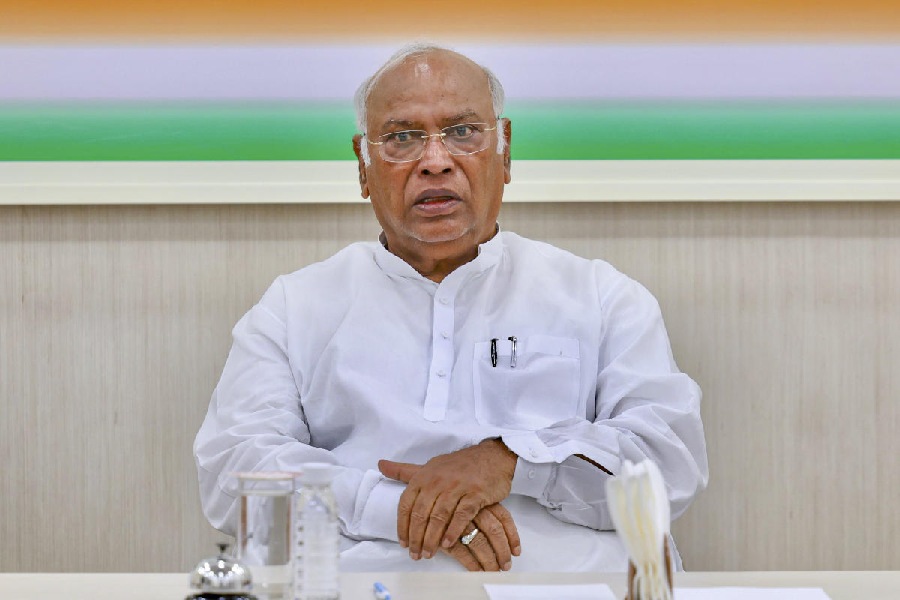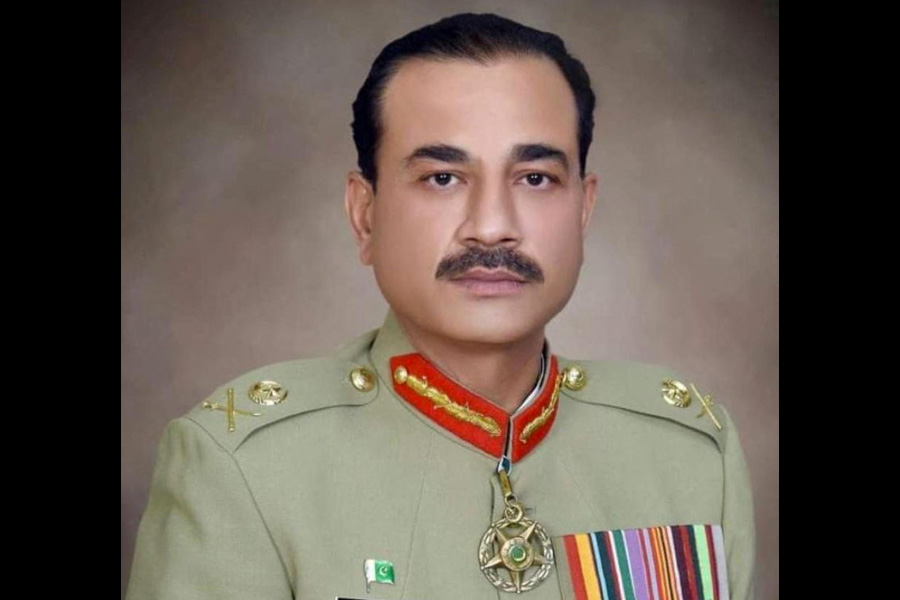 |
| A frame from Ram Shergill’s shoot in Hampi |
Ram Shergill can’t stop talking about India. The London-based fashion photographer of Indian origin gushes about his last trip in November 2006. It was on location for a Tatler shoot. Shergill and company first holidayed in Goa and decided to shoot on a boat there. Flowing chiffons and billowing dresses from Versace and the works.
“But it was not what I wanted. That touristy landscape and glamorous boat could well be anywhere in the south of France. I wanted real India.” The team then set out for Hampi in south India, braved all the night traffic that was “truck-o-block” and then shot in the morning sun.
One year on and the trip is so vivid in his memory that he is still smiling when we take a little break in his Trinity Buoy Wharf London studio to look at the Hampi series on his Mac. I am seated across him, in an office chair made comfortable with three cushions. His studio is large and spacious with tall white ceilings and walls. There is not a hint of intimidating fashion aura.
In fact, the contents of his computer apart, there is no screaming evidence of Shergill’s CV. He doesn’t need to flaunt it. Shergill is one of the most sought-after fashion photographers today. He has shot for some of the biggest magazines in Britain — from fashion bible Vogue to Harpers Bazaar and Tatler, to the more avant garde i-D and Dazed & Confused.
Shergill began his career with milliner Philip Treacy, the late Isabella Blow and Vivienne Westwood and has since worked with leading British fashion designers like John Galliano and supermodels like Naomi Campbell. The latest addition to his portfolio is Drama, a soon-to-be-launched glossy biannual magazine of which he is editor-in-chief.
Shergill’s fashion shoots look larger than life. “The feel is like cinema,” he says. Lots of mirrors, intense compositions, he also loves to work a lot in black and white. But when it comes to shooting in India, he captures it just as the world knows it — bright and loud, almost a riot of happy colours. Most of it comes from vivid Indian locations and beautiful backdrops. Models look glamorous striking a pose against canary yellow trucks or dusty sand dunes, shiny metallic auto rickshaws or rustic temples. Fashion is the focus but Shergill also likes to capture curious Indian onlookers posing innocently in the background. “It’s a very Indian thing to stop everything you’re doing and gather around cameras!”
India is also big on Shergill’s mind because that’s where his first visual impression and inspiration came from. “I grew up on superstar Amitabh Bachchan and his film Sholay. I love Raj Kapoor’s cinema. The first images in my memory bank come from glossy Hindi film posters.” So the math teacher’s son often landed up in the library, escaping from studies and staring at photographs by the great masters of American photography like Walker Evans and Ansel Adams.
He stared so hard that soon he started to believe he was in those pictures! “After Binomial Theorem, I knew I had to get out of there! I was anyway more intrigued by the dark room next to the library where people seemed to shake tents over their heads! I went to ask for a place in that course and managed to take an A-level in photography.”
The camera connection had begun. It was a Pentax k1000. Lots of pictures, the “iconic moment” of developing his first roll of film, poring over contact sheets and hair extensions, Shergill did it all.
Business Studies at Falmouth followed. Nine Fs and he had had enough. The beach had become his studio. Shergill finally persuaded his parents to let him quit numbers and studied visual communication at Wolverhampton University. “I still remember my first published shot featured students from Middlesex University. It was on the Fashion Weekly’s cover.”
During a final degree project on make-up, hair and hats, Shergill tried to borrow couture hats from celebrated milliner Philip Treacy, only to be snubbed. “I called him again after 10 minutes and said: ‘Look Philip, I’m sure you were a student once and it would be appreciated if you could help a fellow-student. So please give them to me.’ It was cheeky, but I got the hats!”
Shergill met (the late) Isabella Blow through Treacy. She helped him get in touch with the who’s who in fashion biz and also introduced him to Vogue. But Shergill didn’t want to be just another “hang-around boy networking in parties” and decided to do the regular rounds — testing, agencies and interviews with fashion editors. Work started flowing in slowly. Designer campaigns, editorial assignments, client-advertising for Moet & Chandon, The Royal Ballet and Gilan Diamonds and eight years on, he has also launched his own magazine Drama.
With less than two weeks to go before his baby goes to print, I leave him to it.
How to face the camera
![]() Drink lots of water. It will show on your face
Drink lots of water. It will show on your face
 |
![]() Make good eye contact with the camera
Make good eye contact with the camera
![]() If you have a good smile, show it. Otherwise, just keep the mouth slightly open, rather than tight shut
If you have a good smile, show it. Otherwise, just keep the mouth slightly open, rather than tight shut
![]() If it’s a warm outdoor shoot, keep your forehead clear of sweat
If it’s a warm outdoor shoot, keep your forehead clear of sweat
![]() Have a twinkle in your eye
Have a twinkle in your eye
![]() Be comfortable in what you wear
Be comfortable in what you wear
![]() Finally, be yourself
Finally, be yourself










